
AZCTECC Special Meeting.
- Subject:
- Collaboration
- Material Type:
- Reading
- Author:
- Tammy Bonner
- Date Added:
- 03/21/2022

AZCTECC Special Meeting.

AZCTECC Special Meeting Agenda and Minutes
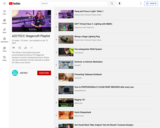
This YouTube video playlist contains the videos embedded within the Vetted Stagecraft curriculum found on the CTE Curriculum Connection.

AZCTECC Steering Committee Speical Meeting.
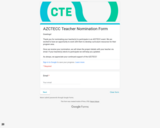
Greetings!
Thank you for nominating your teacher(s) to participate in an AZCTECC event. We are excited to have an opportunity to work with them to develop curriculum resources for their program area.
Once we receive your nomination, we will share the project details with your teacher via email. If your teacher(s) elects to participate we will keep you updated.
As always, we appreciate your continued support of the AZCTECC!
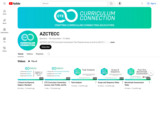
Helpful content includes CTE Curriculum Connection training videos, Curricular and Instructional Resource overviews, and Program-Specific Playlists.
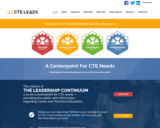
The Leadership Continuum grew out of a committee of dedicated Arizona Career and Technical Education professionals who wanted to build capacity and ensure sustainability of CTE leadership in the classroom ranks, school administration, post-secondary leadership, and business & industry. Work began in December 2010 with the charge in determining how best to grow leaders who know and understand CTE.
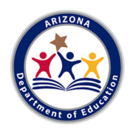
The Arizona Professional Skills Standards:Complex CommunicationCollaborationThinking and InnovationProfessionalismInitiative and DirectionIntergenerational & Cross-Cultural CompetenceOrganizational CultureLegal & Ethical PracticesFinancial Practices

CAREERS IN RETAIL
Welcome to Arizona's only targeted retail sector-focused resource for information and tools for job seekers, frontline workers, retail employers and workforce development professionals.
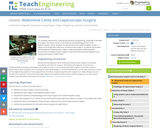
For students interested in studying biomechanical engineering, especially in the field of surgery, this lesson serves as an anatomy and physiology primer of the abdominopelvic cavity. Students are introduced to the abdominopelvic cavity—a region of the body that is the focus of laparoscopic surgery—as well as the benefits and drawbacks of laparoscopic surgery. Understanding the abdominopelvic environment and laparoscopic surgery is critical for biomechanical engineers who design laparoscopic surgical tools.
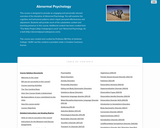
This course is designed to provide an engaging and personally relevant overview of the discipline of Abnormal Psychology. You will examine the cognitive and behavioral patterns which impair personal effectiveness and adjustment. Students will provide much of the substantive content and teaching presence in this course. Additional content has been curated from "The Noba Project (http://nobaproject.com/)" and "Abnormal Psychology: An e-text! (http://abnormalpsych.wikispaces.com/).
Openly-licensed course materials developed for the Open Educational Resources (OER) Degree Initiative, led by Achieving the Dream. https://courses.lumenlearning.com/catalog/achievingthedream
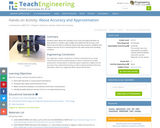
Students learn about the concepts of accuracy and approximation as they pertain to robotics, gain insight into experimental accuracy, and learn how and when to estimate values that they measure. Students also explore sources of error stemming from the robot setup and rounding numbers.
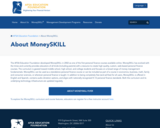
The AFSA Education Foundation developed MoneySKILL in 2002 as one of the first personal finance courses available online.
MoneySKILL has evolved with the times and currently provides educators of all kinds (including parents) with a resource to create high-quality, custom, web-based personal finance courses. The curriculum is geared toward middle school, high school, and college students and focuses on a broad range of money management fundamentals.
MoneySKILL can be used as a standalone personal finance course or can be included as part of a course in economics, business, math, family and consumer sciences, or wherever personal finance is taught.
In addition to being completely free (and ad-free) for all users, MoneySKILL is offered in English and Spanish, contains audio dictation options, and aligns with nationally recognized K-12 personal finance standards. Both the curriculum and its underlying technology infrastructure are updated regularly.
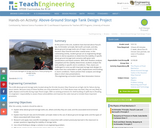
At this point in the unit, students have learned about Pascal's law, Archimedes' principle, Bernoulli's principle, and why above-ground storage tanks are of major concern in the Houston Ship Channel and other coastal areas. In this culminating activity, student groups act as engineering design teams to derive equations to determine the stability of specific above-ground storage tank scenarios with given tank specifications and liquid contents. With their floatation analyses completed and the stability determined, students analyze the tank stability in specific storm conditions. Then, teams are challenged to come up with improved storage tank designs to make them less vulnerable to uplift, displacement and buckling in storm conditions. Teams present their analyses and design ideas in short class presentations.
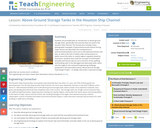
Students are provided with an introduction to above-ground storage tanks, specifically how and why they are used in the Houston Ship Channel. The introduction includes many photographic examples of petrochemical tank failures during major storms and describes the consequences in environmental pollution and costs to disrupted businesses and lives, as well as the lack of safety codes and provisions to better secure the tanks in coastal regions regularly visited by hurricanes. Students learn how the concepts of Archimedes' principle and Pascal's law act out in the form of the uplifting and buckling seen in the damaged and destroyed tanks, which sets the stage for the real-world engineering challenge presented in the associated activity to design new and/or improved storage tanks that can survive storm conditions.
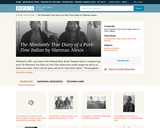
This collection uses primary sources to explore The Absolutely True Diary of a Part-Time Indian by Sherman Alexie. Digital Public Library of America Primary Source Sets are designed to help students develop their critical thinking skills and draw diverse material from libraries, archives, and museums across the United States. Each set includes an overview, ten to fifteen primary sources, links to related resources, and a teaching guide. These sets were created and reviewed by the teachers on the DPLA's Education Advisory Committee.
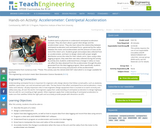
Students work as physicists to understand centripetal acceleration concepts. They also learn about a good robot design and the accelerometer sensor. They also learn about the relationship between centripetal acceleration and centripetal force governed by the radius between the motor and accelerometer and the amount of mass at the end of the robot's arm. Students graph and analyze data collected from an accelerometer, and learn to design robots with proper weight distribution across the robot for their robotic arms. Upon using a data logging program, they view their own data collected during the activity. By activity end , students understand how a change in radius or mass can affect the data obtained from the accelerometer through the plots generated from the data logging program. More specifically, students learn about the accuracy and precision of the accelerometer measurements from numerous trials.
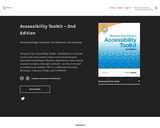
The goal of this accessibility toolkit, 2nd edition, is to provide resources for each content creator, instructional designer, educational technologist, librarian, administrator, and teaching assistant to create a truly open textbook—one that is free and accessible for all students. This is a collaboration between BCcampus, Camosun College, and CAPER-BC.
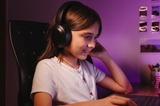
In this lesson, students will:Define terminology.Distinguish the differences between accommodations and modifications. Identify and sort accommodation and modification strategies.

The items contained in this bank were developed in alignment with the Item Writing Guidelines used by the Arizona Department of Education (ADE) for the Technical Skills Assessments (TSA) and align with the curriculum posted on the CTE Curriculum Connection. These items are unique and not part of the ADE Item Bank although they mimic items students may see on the TSA. The items are aligned to the January, 2022 Accounting Technical Standards.